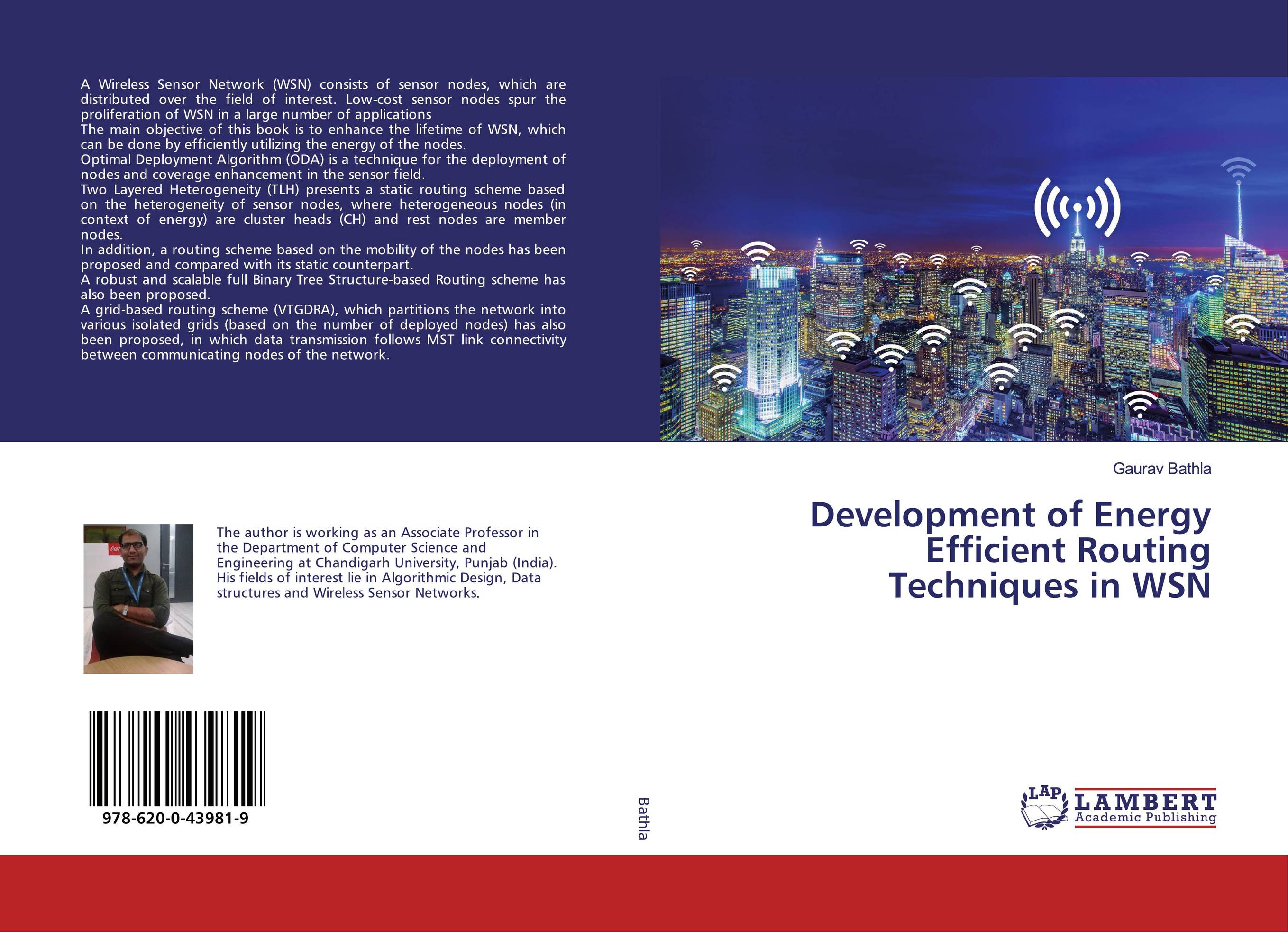| Поиск по каталогу |
|
(строгое соответствие)
|
- Профессиональная
- Научно-популярная
- Художественная
- Публицистика
- Детская
- Искусство
- Хобби, семья, дом
- Спорт
- Путеводители
- Блокноты, тетради, открытки
Development of Energy Efficient Routing Techniques in WSN.

В наличии
| Местонахождение: Алматы | Состояние экземпляра: новый |

Бумажная
версия
версия
Автор: Gaurav Bathla
ISBN: 9786200439819
Год издания: 2019
Формат книги: 60×90/16 (145×215 мм)
Количество страниц: 132
Издательство: LAP LAMBERT Academic Publishing
Цена: 36414 тг
Положить в корзину
Позиции в рубрикаторе
Отрасли знаний:Код товара: 505199
| Способы доставки в город Алматы * комплектация (срок до отгрузки) не более 2 рабочих дней |
| Самовывоз из города Алматы (пункты самовывоза партнёра CDEK) |
| Курьерская доставка CDEK из города Москва |
| Доставка Почтой России из города Москва |
Аннотация: A Wireless Sensor Network (WSN) consists of sensor nodes, which are distributed over the field of interest. Low-cost sensor nodes spur the proliferation of WSN in a large number of applicationsThe main objective of this book is to enhance the lifetime of WSN, which can be done by efficiently utilizing the energy of the nodes.Optimal Deployment Algorithm (ODA) is a technique for the deployment of nodes and coverage enhancement in the sensor field. Two Layered Heterogeneity (TLH) presents a static routing scheme based on the heterogeneity of sensor nodes, where heterogeneous nodes (in context of energy) are cluster heads (CH) and rest nodes are member nodes. In addition, a routing scheme based on the mobility of the nodes has been proposed and compared with its static counterpart. A robust and scalable full Binary Tree Structure-based Routing scheme has also been proposed. A grid-based routing scheme (VTGDRA), which partitions the network into various isolated grids (based on the number of deployed nodes) has also been proposed, in which data transmission follows MST link connectivity between communicating nodes of the network.
Ключевые слова: Wireless Sensor Network, Two level Heterogeneity, Minimum spanning tree, sensor node, Packet Delivery Ratio, Energy Depletion Rate, Cluster head, quality-of-service, Wireless Sensor Networks, Optimal Deployment Algorithm



